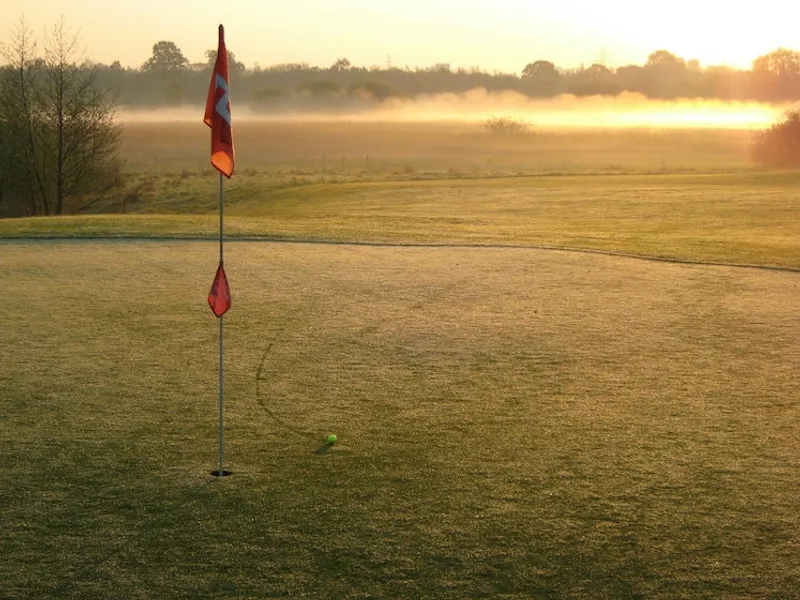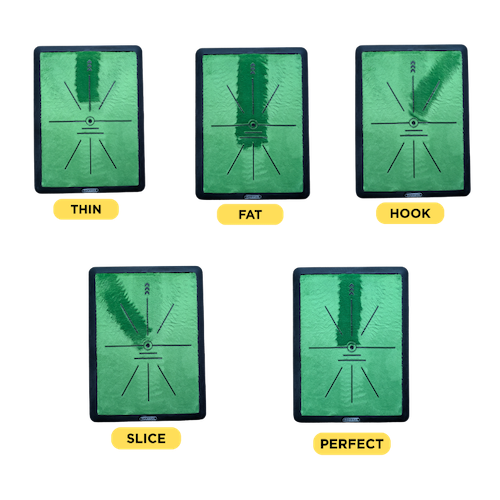10 Swing Tips for Beginner Golfers
Golf can initially seem like a maze of complex movements and etiquette, but honing your swing is one of the most direct ways to gain confidence on the course. This guide aims to help...

Golf can initially seem like a maze of complex movements and etiquette, but honing your swing is one of the most direct ways to gain confidence on the course. This guide aims to help...
Golf can initially seem like a maze of complex movements and etiquette, but honing your swing is one of the most direct ways to gain confidence on the course. This guide aims to help you grasp the essentials of a solid golf swing by focusing on proper setup, a clear breakdown of swing mechanics, and practical techniques that you can integrate into your own practice routine.
While each golfer develops a unique style, the fundamentals of grip, stance, and body alignment remain the bedrock of any successful swing. By steadily reinforcing these basics, you’ll set yourself up for smoother, more accurate shots and a game that becomes increasingly gratifying with every practice session.
A balanced and relaxed grip is crucial for guiding the club through each phase of your swing. For right-handed golfers, begin by allowing your left hand to cradle the club diagonally across your fingers, with your thumb sitting just off-center. Your right hand should then wrap gently around the club, interlocking or overlapping with your left hand’s fingers. By avoiding an overly tight squeeze, your hands and wrists can release more naturally at impact, promoting a fluid follow-through.
Struggling with thins, fats, slices—or just can’t tell what’s going wrong?
This swing mat shows you exactly how your club strikes the ball, giving instant visual feedback after every shot. With just a few swings, you’ll start spotting mistakes in your swing path that are otherwise invisible.

It’s a quick, low-hassle way to connect what you feel in your body with what’s really happening at impact.
Use it indoors or out, no ball required—just swing and learn. It’s one of the fastest ways to improve your swing right from home.
Once you have a comfortable grip, focus on positioning your feet and legs to support a stable swing. A shoulder-width stance, with feet parallel to your intended target line, provides a secure base. Keep your knees slightly flexed and distribute your weight evenly between both feet so that you can easily rotate later in the swing. When you lean forward from your hips—maintaining a straight back—you create a poised, athletic posture that lets your arms hang freely from your shoulders.
Proper alignment ties your grip and stance together, forming the bridge between setup and swing execution. By setting your feet, hips, and shoulders in parallel lines toward the target, you create a cleaner path for your club. This alignment keeps your posture balanced, reduces unnecessary tension in your shoulders, and helps you rotate more efficiently. Consistent alignment also allows your arms to swing in harmony with your body, making it easier to connect squarely with the ball.
The takeaway is your stage-setter, dictating the rhythm for the rest of the swing. Begin sweeping the club back gently along the target line, keeping your hands, arms, and shoulders working together in a smooth motion. Rather than forcing a quick start, focus on a calm, gradual movement. When the club moves steadily away from the ball, you’ll be more likely to keep everything on plane and transition seamlessly into the backswing.
As the club ascends, let your shoulders rotate fully while your arms follow a natural arc. Keep your elbows relatively close to your torso and hinge your wrists so the club can reach a comfortable height, all while maintaining a sense of control in your core. You’ll feel your weight shift subtly onto your back foot. This buildup of energy sets the stage for a powerful but balanced downswing.
Once you finish the backswing, focus on transitioning your weight from the back foot toward the target—this shift initiates the downswing. Rotate your hips forward and allow your arms to drop, keeping the club on a path that mirrors your takeaway. The key is to let the turn of your hips lead the motion before your hands and wrists deliver the clubhead. A coordinated downswing ensures you deliver the clubface to the ball with authority and accuracy.
The Sand Save
Sponsored

After impact, let your momentum carry your arms and the club forward. Your chest will naturally rotate to face the target, and your weight will move almost entirely onto your forward foot. Maintaining a steady, balanced finish helps ingrain the sensation of a proper turn and completes the arc of your swing. A graceful finish isn’t just style—it’s the natural extension of a powerful downswing and a sign you’ve stayed in control.
Beginners benefit most from practical reminders that foster instant improvement, and one of the simplest is remembering to stay relaxed. A grip that is firm enough to control the club but pliable enough to allow wrist release can greatly influence your shot quality. Avoid tension in your forearms and shoulders so that the club can glide smoothly through the backswing and downswing. Keeping a steady tempo also proves invaluable. By rehearsing your swing at a moderate, consistent speed—even in slow motion—you’ll build a foundation of muscle memory that supports a more fluid performance.
Fusing all phases of the swing into a connected, rhythmic sequence is equally crucial. Rather than viewing the takeaway, backswing, downswing, and follow-through as separate tasks, visualizing them as linked movements helps prevent abrupt jerks and breaks in motion. When you can integrate each piece into a single cohesive flow, you’ll find the ball striking feels more controlled and far more natural.
One of the quickest ways to internalize proper setup is to position yourself in front of a mirror. Stand as you would at address, examining your reflection to confirm that your feet, hips, and shoulders aim toward an imaginary target. Notice how the club sets in your grip and whether your body lines match up. This simple self-check enhances awareness of your posture and helps you align consistently without second-guessing.
By deliberately slowing each portion of your swing, you gain the mental space needed to notice subtle missteps. Begin your takeaway in a controlled, unhurried fashion, then pause at the top of your backswing long enough to check that your shoulder turn feels comfortable. From there, flow into the downswing at a measured rate, focusing on how your hips lead and how your arms naturally follow. This practice method cements your swing sequence and improves your timing.
The Sand Save
Sponsored

Learning to direct your weight from your back foot to your front foot is a crucial element of generating power and maintaining balance. In a slow, methodical swing, follow the sensation of weight shifting toward your leading leg. Track how the shift influences your hips, arms, and, ultimately, the clubface’s approach to the ball. Repeatedly rehearsing this pattern builds a confident, repeatable transfer that ties the swing’s motions together.
A well-planned practice session rustles together all of the elements you’ve been refining. Start with a brief warm-up that includes stretches or easy swings to loosen your muscles. Next, dedicate time to align yourself in front of a mirror to reinforce proper posture. Transition into slow motion drills, letting you deeply feel each facet of the swing before gradually picking up tempo. Finish by focusing on the weight transfer drill, concentrating on the smooth progression from backswing to follow-through. This routine-focused approach builds consistency and reliably grows your confidence over time.
Building a dependable golf swing begins with a grip that is both secure and flexible, followed by a stance and alignment that encourage balanced rotation. By methodically refining each key moment—from the measured takeaway to the balanced follow-through—you’ll form a cohesive motion that feels seamless under pressure.
Whether you’re practicing basic weight shifts at the range or using a mirror to confirm your posture at home, a steady emphasis on fundamentals will guard against common errors. With consistent effort and attention to detail, the gradual improvements you gather will transform your swing into a reliable, satisfying part of your golf game.
Golf is often celebrated for its blend of patience, precision, and technique. Nowhere is that delicate balance more evident than in the swing itself. A well-executed swing sends the ball soaring toward the target with consistency and power, while a f...
getting-started05-12-2024
The 3 wood is both appealing and challenging, often leading golfers to wrestle with inconsistent contact and difficulty generating the right launch angle. Its versatility makes it an excellent option both off the tee and from the fairway, yet mishits...
getting-started01-08-2024
Learning how to hit a driver effectively can be one of the most exciting moments in golf. There is something particularly satisfying about launching the ball down the fairway with a powerful, well-timed swing. Yet for many beginners, the driver swing...
getting-started16-01-2025
The ability to control the trajectory of your shot—deciding between a draw or a fade—can transform your game, turning obstacles into opportunities and adding a new dimension to your play. Understanding these two techniques isn't just about skill...
instruction10-01-2025
A pitch shot in golf relies on precision and touch rather than brute strength. By using a short, controlled swing and a setup often referred to as “center, center, center”—where the ball, stance, and contact point align at the center—you create the f...
instruction08-11-2024